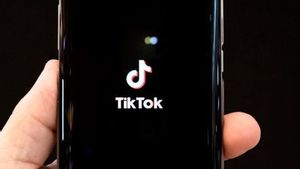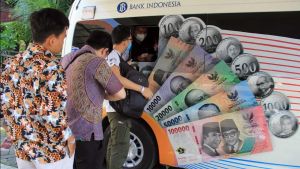JAKARTA - Recently Google has banned deepfake algorithm from Google Collaboratory, it is a free computing service with access to GPU. The tech giant isn't the only one regulating deepfakes as some US states have regulations governing them, China's draft law requires identification of computer-generated media, and prospective EU AI regulations may include clauses about this particular technology.
Kaspersky experts explain what a deepfake is, and why there is so much controversy surrounding it along with how users can protect themselves.
'Deepfake' usually refers to various types of computer-generated media involving people and created with neural networks. This may be a video, photo, or sound recording. Instead of using traditional image editing techniques, the use of deep learning has shifted the need for skill and effort to create convincing fake images.
Originally, the term referred to a specific piece of software that had gained popularity on Reddit. The software can embed a person's face into videos featuring other people, and is almost entirely used to create non-consensual pornography with celebrities.
According to some estimates, up to 96 percent of all deepfakes are pornographic, highlighting concerns around deepfakes being used for harassment, extortion and public humiliation.
This technology can also help cybercriminals. In at least two cases, in the UK and Hong Kong, voice deepfakes have been used to trick companies into transferring funds to online fraudsters, posing as officials from each company.
Recent research has shown that commercial liveness detection algorithms, used by financial institutions in KYC procedures, can be fooled by deepfakes created from ID photos, creating new attack vectors and making identity leaks a more serious problem.
Another problem is that deepfakes undermine trust in audio and video content because they can be used for malicious purposes.
For example, in a recent case, a fake interview with Elon Musk was used to promote cryptocurrency scams. Various experts and institutions, such as Europol, warn that the increasing availability of deepfakes could lead to a further proliferation of disinformation on the Internet.
But it's not all bad news. Image manipulation is as old as images themselves, and CGI has been around for decades, and both have been put to good use, much like deepfakes.
For example, in Kendrick Lamar's recent video, Heart Part 5, deepfake technology was used to transform rappers' faces into other famous celebrities, such as Kanye West. In Top Gun: Maverick, an algorithm is used to voice Val Kilmer's character after the actor loses his voice.
The deepfake algorithm was also used to create a viral TikTok series starring the fake Tom Cruise. Some startups are looking for new ways to use technology, for example, to generate vivid metaverse avatars.
The English, Chinese, Japanese, Arabic, and French versions are automatically generated by the AI. So there may still be inaccuracies in translating, please always see Indonesian as our main language. (system supported by DigitalSiber.id)













